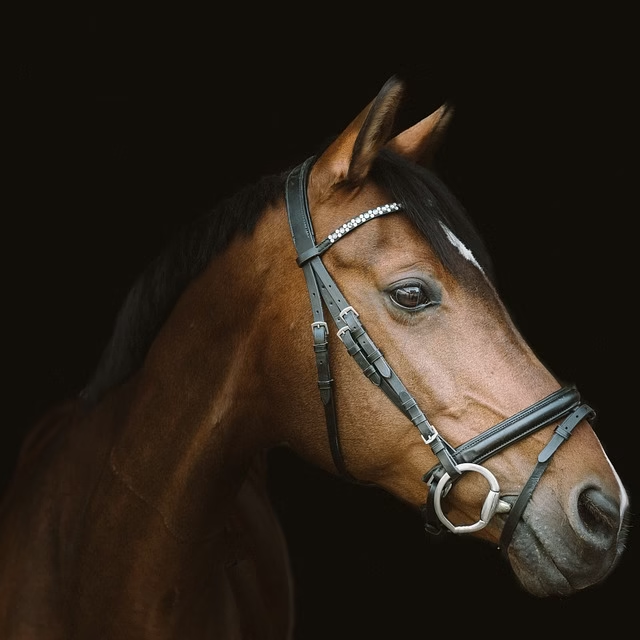The world of equestrian culture is rich and diverse, with countless breeds captivating horse lovers around the globe. Among these magnificent creatures stands the BK Horse, a breed that has garnered attention for its unique blend of beauty, athleticism, and charm. With roots tracing back through history to distinct geographical regions, the BK Horse embodies not just physical prowess but also cultural significance. This enchanting breed captures hearts in arenas and stables alike. Whether you’re a seasoned rider or simply an admirer from afar, understanding what makes the BK Horse so special opens up a fascinating journey into equestrian excellence. Let’s dive deeper into this captivating breed and explore what sets it apart in the vibrant tapestry of horse culture.
The distinctive physical characteristics of the BK Horse
The BK Horse is easily recognizable, thanks to its impressive stature and striking features. This breed typically boasts a strong, muscular build that exudes power and grace. With an average height of 15 to 17 hands, they possess the ideal frame for both performance and endurance.
Their coats come in a variety of colors, from rich chestnuts to elegant grays. The shiny coat often reflects their well-maintained health and vitality.
One standout characteristic is their expressive eyes; large and soulful, they convey intelligence and curiosity. Their ears are alert yet relaxed, showcasing the horse’s calm temperament.
Another fascinating aspect is their unique mane and tail—thick with a natural wave—that enhances their majestic appearance while adding to their allure on the show circuit. Each detail contributes to the overall charm of this captivating breed.
The role of BK Horses in equestrian competitions and shows
BK Horses have carved a niche in the competitive equestrian scene. Their combination of elegance, agility, and intelligence makes them formidable contenders in various disciplines.
In dressage, BK Horses showcase their grace through intricate movements. Judges look for precision, rhythm, and harmony between horse and rider. The breed often stands out due to its natural athleticism.
Show jumping is another arena where BK Horses excel. Their powerful build allows them to clear obstacles with ease. Riders appreciate their keen sense of timing, which is crucial for navigating courses effectively.
Furthermore, endurance events highlight the stamina that defines this breed. With proper training, BK Horses can maintain energy levels over long distances while remaining responsive to their riders’ commands.
Their versatility not only elevates competitions but also captivates audiences worldwide. Each performance tells a story of dedication and partnership between horse and rider.
Training and care for BK Horses
Training BK Horses requires patience and consistency. These animals are intelligent and responsive, making them quick learners when approached correctly. Start with groundwork to build trust and establish a strong foundation.
Once they’re comfortable on the ground, introduce riding gradually. Focus on basic commands before progressing to more complex maneuvers. Positive reinforcement is essential; rewards create a bond between horse and handler.
Care for BK Horses includes a balanced diet tailored to their needs. Regular exercise keeps them fit, while grooming helps maintain their coat health and strengthens your relationship with them.
Health checks should be routine—be vigilant about vaccinations, dental care, and hoof maintenance. A well-cared-for BK Horse thrives both physically and mentally in training sessions or competitions.
The appeal and popularity of the BK Horse among equestrian enthusiasts
The BK Horse has captured the hearts of equestrian enthusiasts around the world. Its striking presence and elegant movements make it a favorite in various disciplines, from dressage to show jumping.
One aspect that draws riders is its versatility. Whether competing or enjoying leisurely rides, these horses adapt well to different environments. Their calm demeanor fosters a strong bond with their handlers.
Additionally, owners appreciate the breed’s intelligence and trainability. This makes the BK Horse an ideal partner for both seasoned riders and beginners seeking companionship on their journey through equestrian sports.
Social media showcases stunning images and videos of this breed, further amplifying interest within online communities. Enthusiasts share tips on care and training techniques, creating a vibrant network dedicated to all things BK Horse.
As more people discover this captivating breed, its popularity continues to rise among horse lovers globally. The allure of the BK Horse shows no signs of fading anytime soon.
Controversies surrounding the breeding and use of BK Horses
The BK Horse breed has garnered attention, both positive and negative. Some enthusiasts express concerns about the ethics of breeding practices. They worry about genetic diversity and potential health issues that can arise from selective breeding.
Critics argue that certain breeders prioritize appearance over temperament and soundness. This approach may lead to horses with behavioral problems or physical impairments, raising questions about animal welfare in the industry.
Additionally, there are debates around the use of BK Horses in high-stakes competitions. The pressure to perform can result in intensive training regimens that might strain young animals physically and psychologically.
Some advocates push for more transparency regarding breeding standards. They believe this could help mitigate risks associated with questionable practices while preserving the integrity of the breed itself.
As discussions continue within equestrian circles, stakeholders seek ways to balance tradition with modern ethical considerations concerning BK Horses.
The future of the BK Horse breed in equestrian culture
The future of the BK Horse breed looks promising amidst changing equestrian landscapes. As interest in diverse horse breeds grows, the BK Horse is gaining recognition for its unique characteristics and versatility.
Breeders are focusing on preserving the distinct traits that make this breed stand out. By promoting responsible breeding practices, enthusiasts aim to maintain genetic diversity while enhancing performance attributes.
Moreover, as more riders seek horses suited for various disciplines—from dressage to eventing—the BK Horse’s adaptability becomes a valuable asset. This opens doors for increased participation in competitions and exhibitions.
With social media platforms showcasing stunning visuals of these magnificent animals, awareness continues to rise. Engaging stories about their personalities captivate audiences worldwide.
As educational initiatives spread knowledge about proper care and training techniques, new generations will appreciate the richness of this breed’s heritage. The BK Horse has the potential to carve an enduring legacy within equestrian culture.
Conclusion
The BK Horse embodies a unique blend of elegance, strength, and versatility. Its rich history adds depth to its presence in the equestrian world. With striking physical characteristics, these horses capture attention wherever they go.
Their role in competitions showcases their athleticism and beauty. Many riders are drawn to the challenge and satisfaction that comes with training a BK Horse. The bond formed through this process is often profound.
Despite their popularity, controversies surround breeding practices and usage within competitive realms. Advocates argue for ethical standards while ensuring the breed’s longevity.
As we look ahead, the future of the BK Horse appears promising yet uncertain. As more enthusiasts embrace this majestic breed, efforts toward responsible breeding will be crucial for sustaining their legacy in equestrian culture. The allure of the BK Horse continues to thrive amidst challenges and rewards alike.

